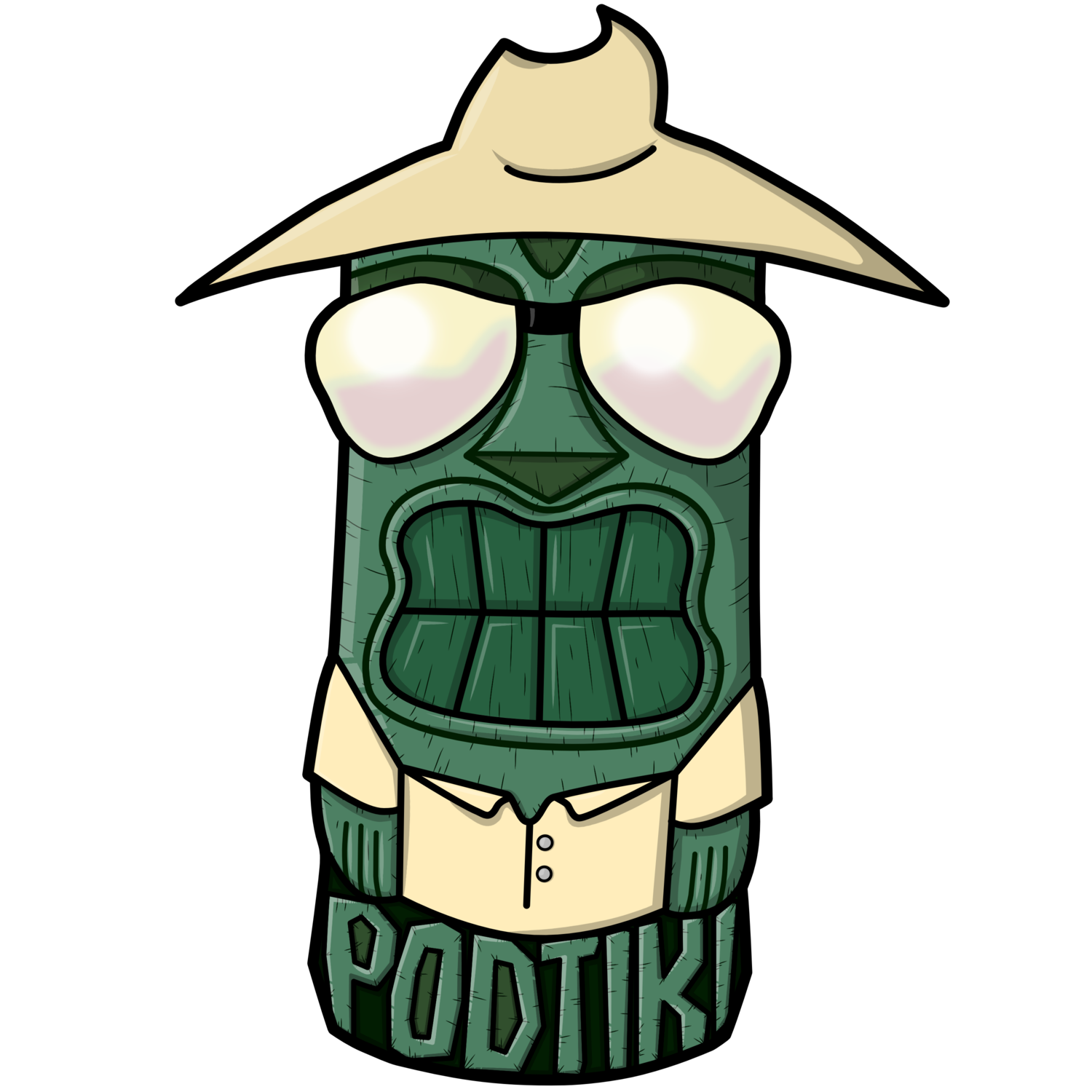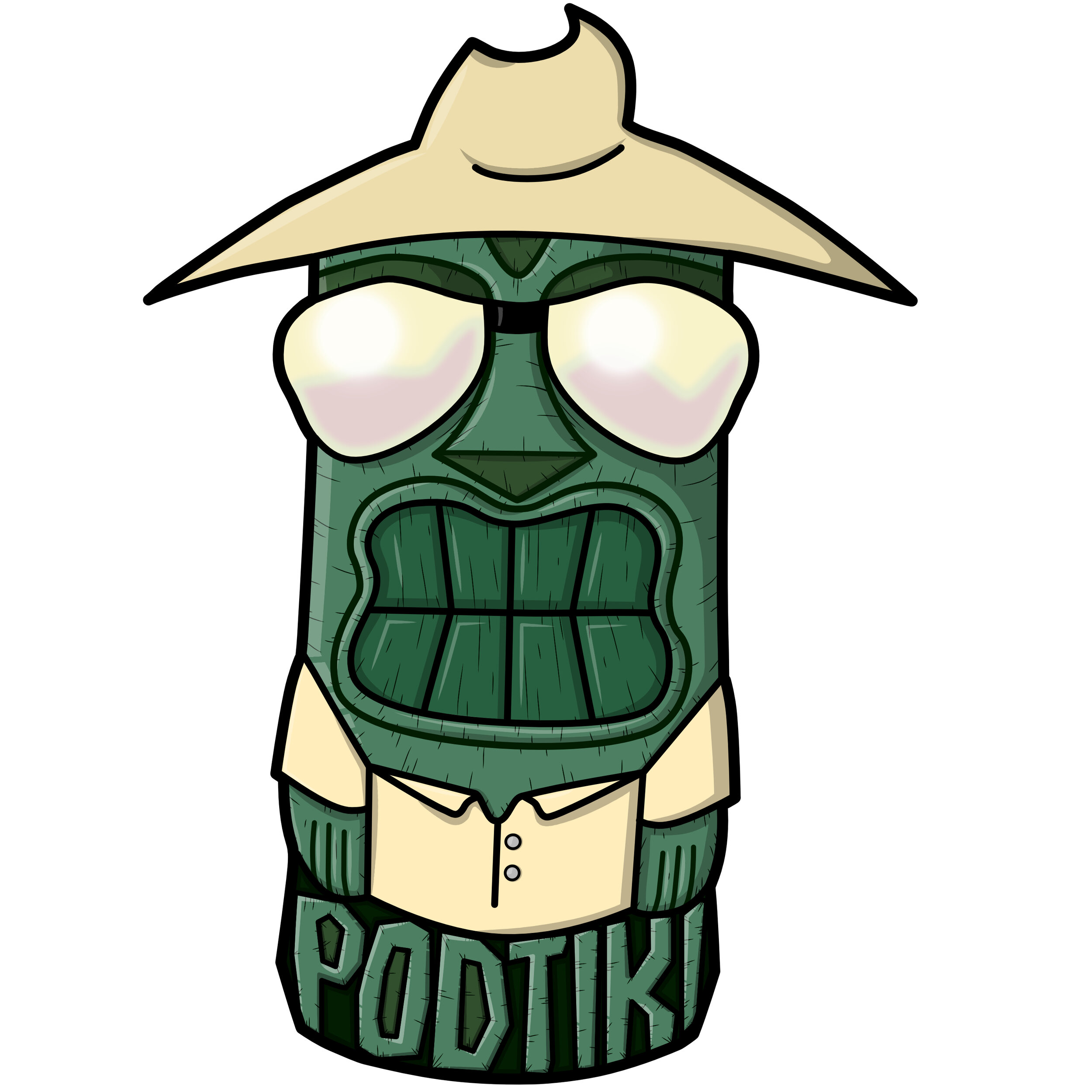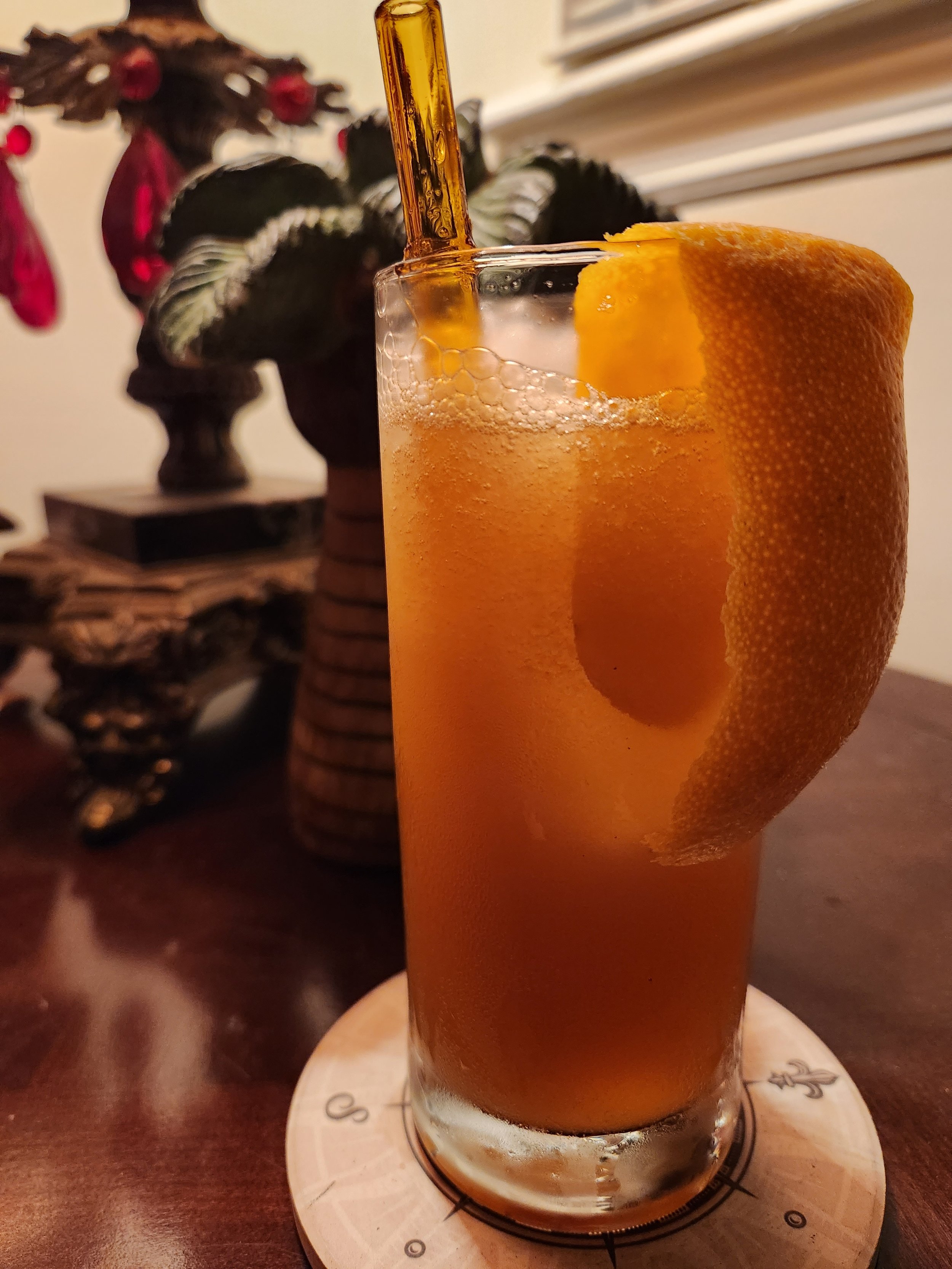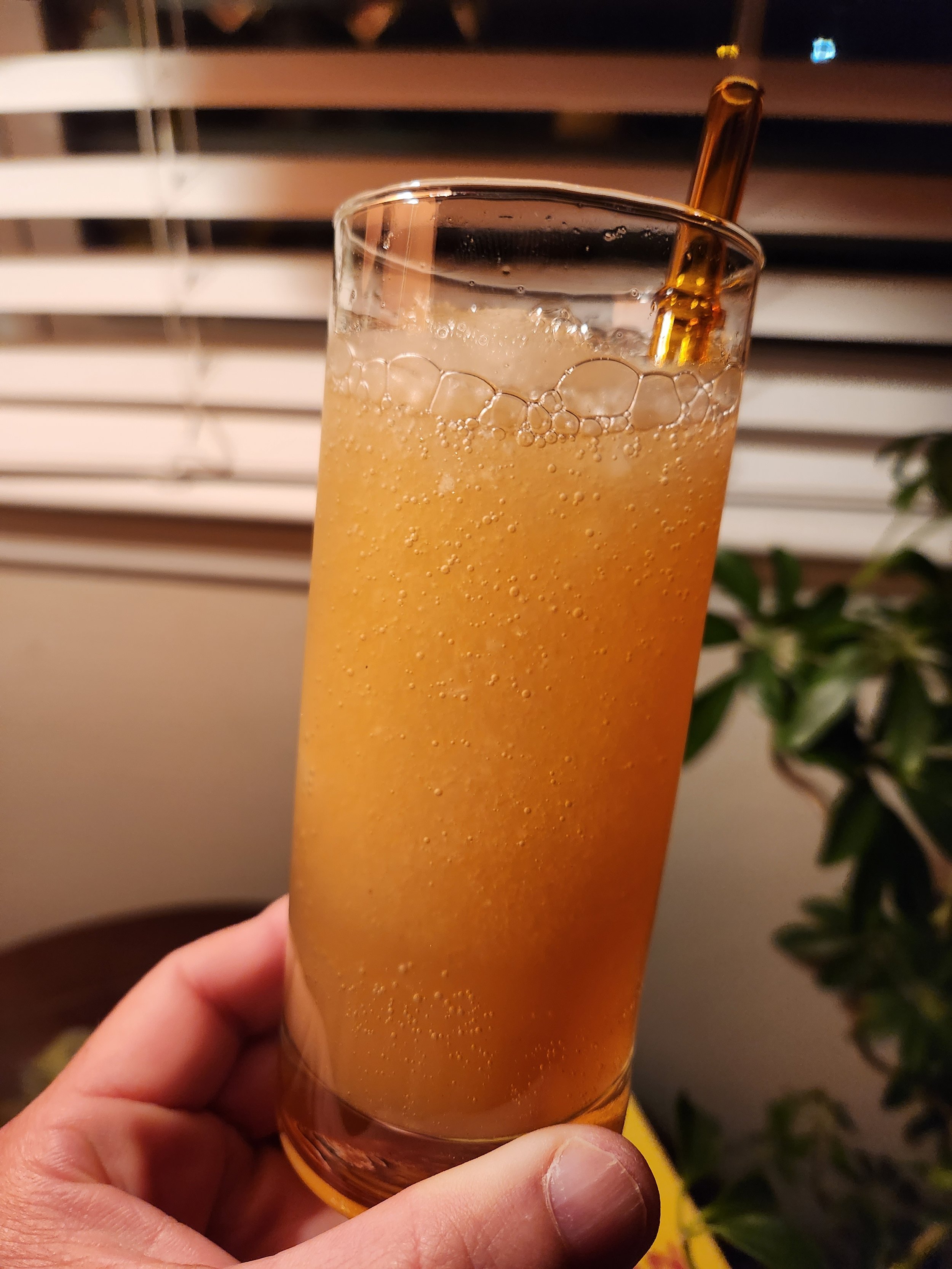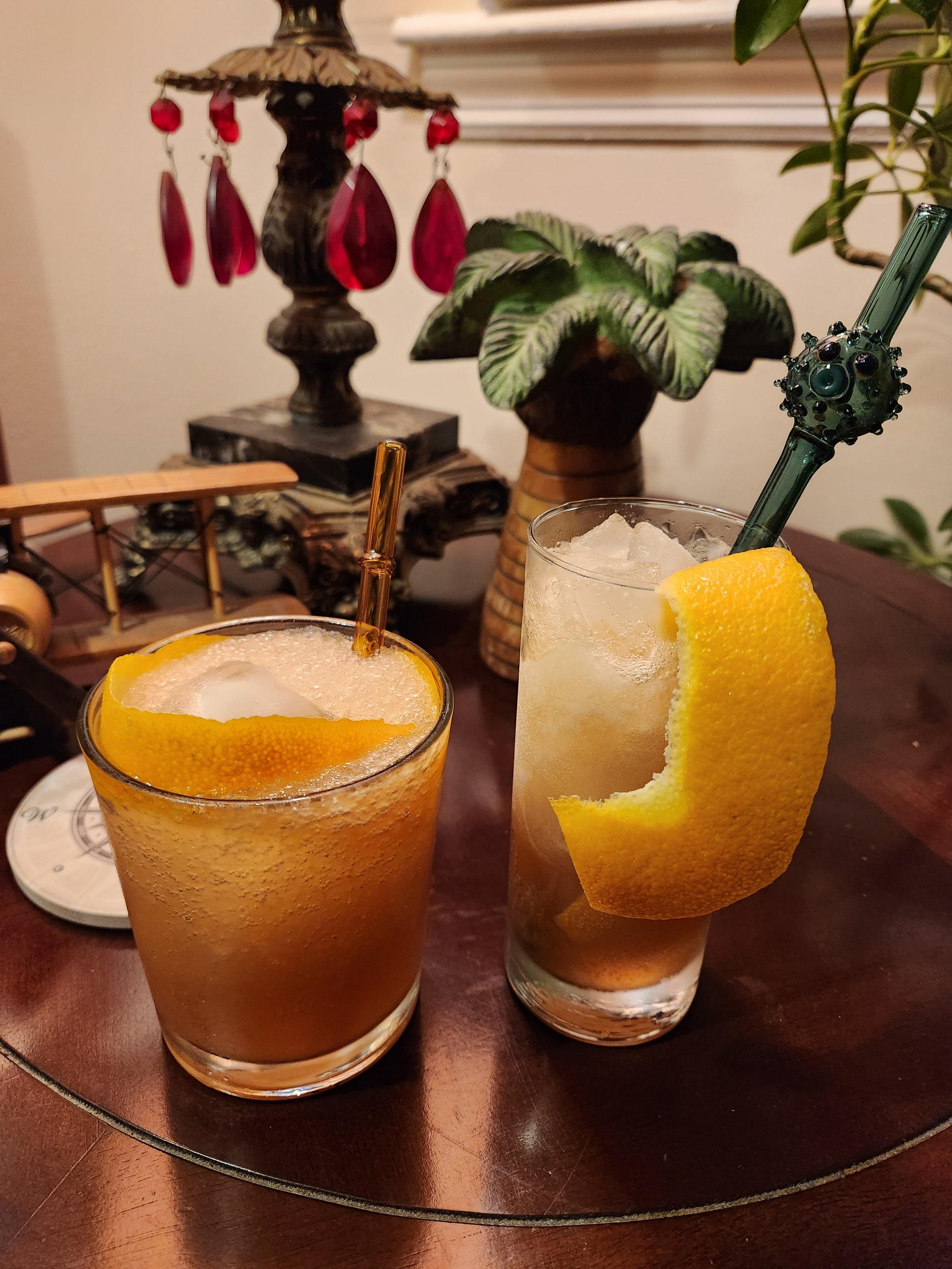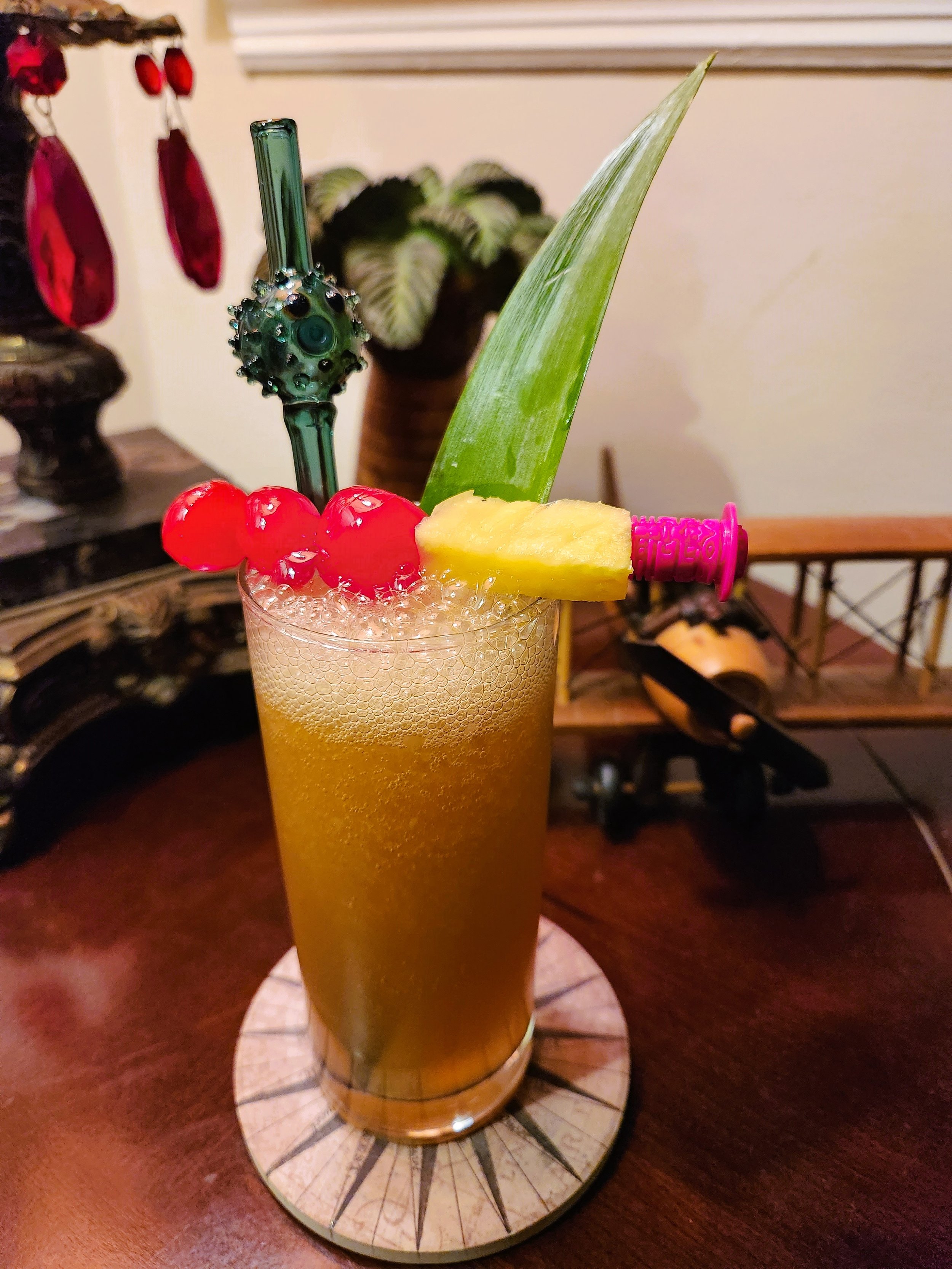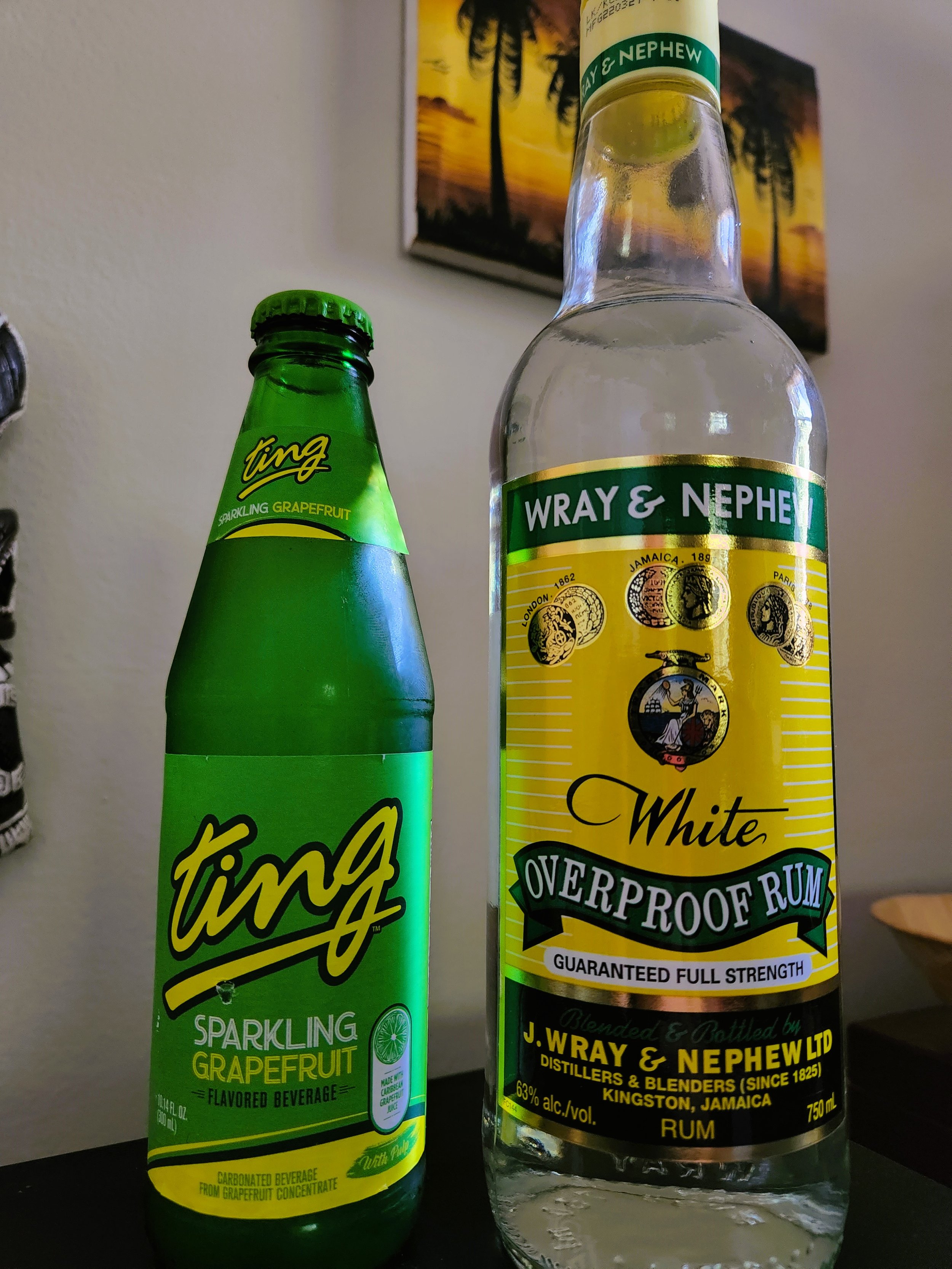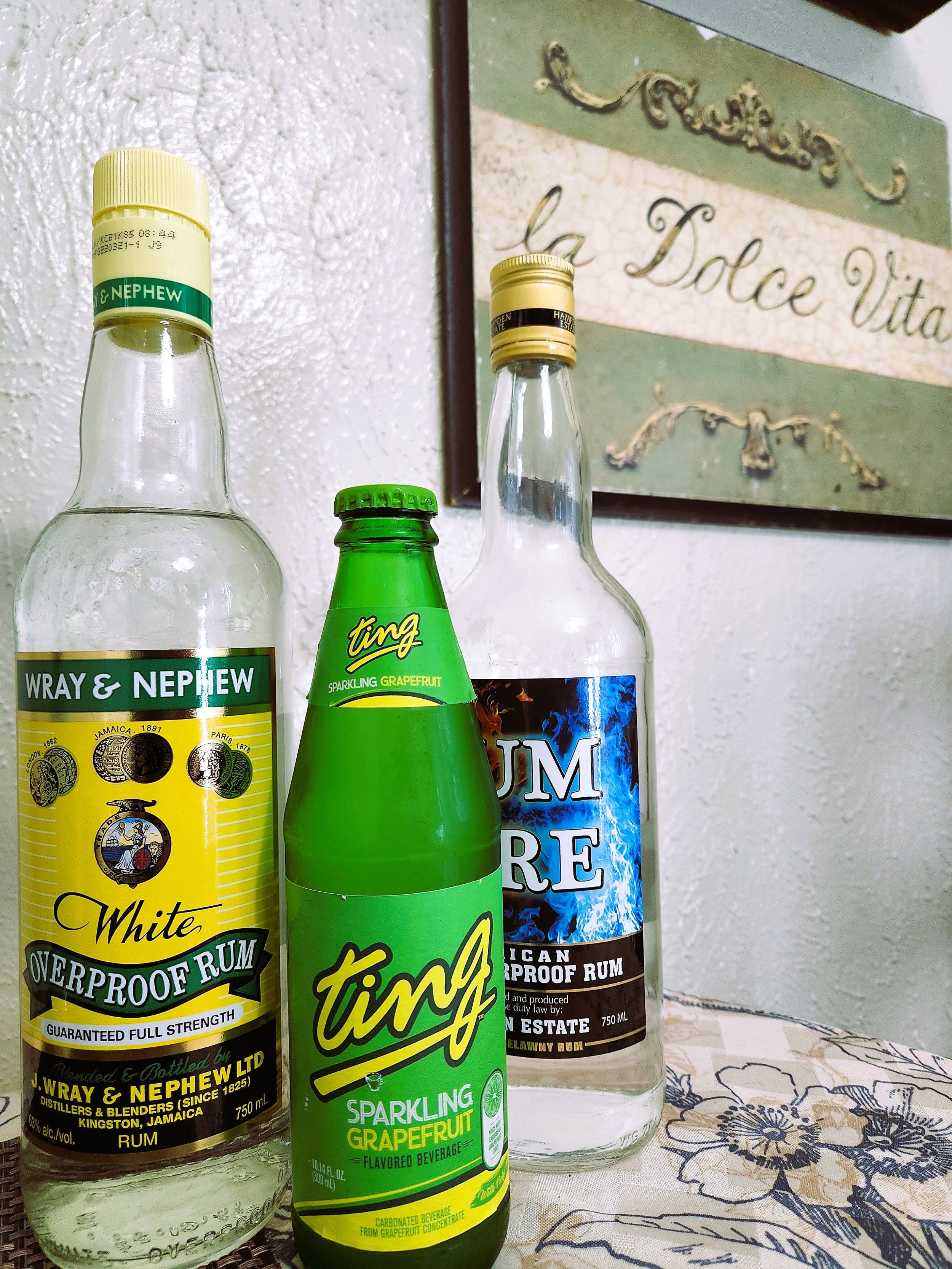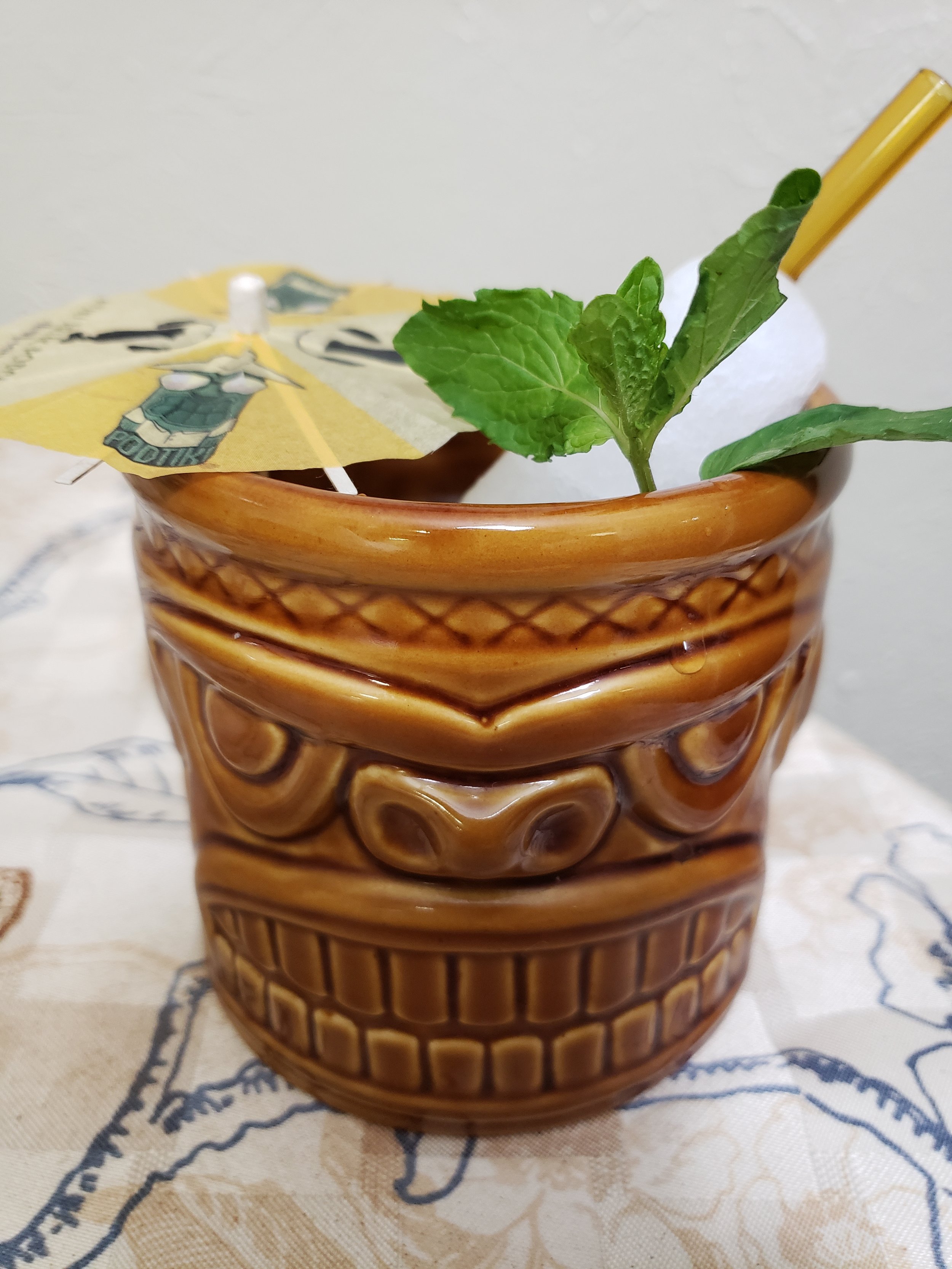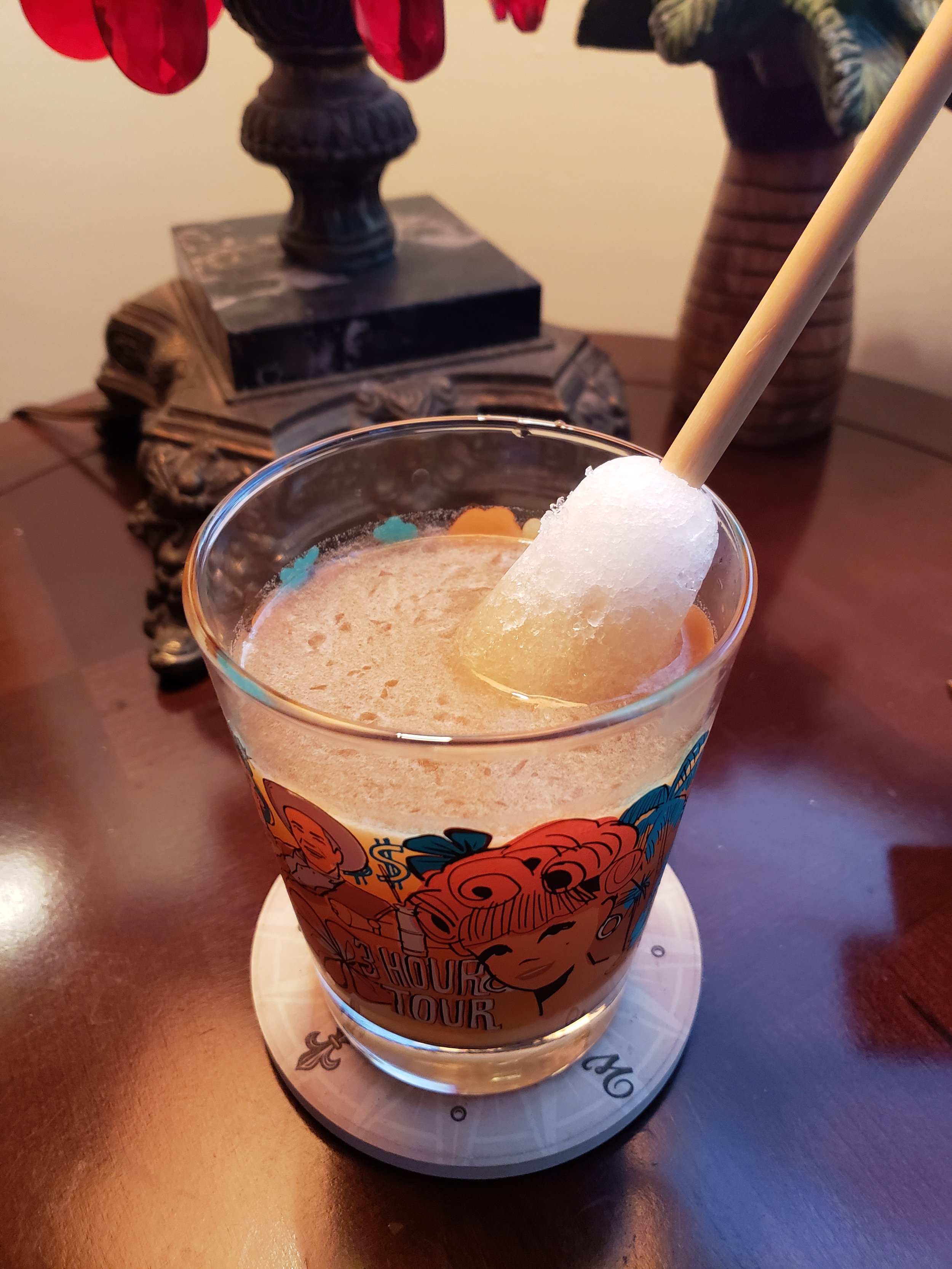I’ve always made it a point to incorporate classic pre- and post-prohibition era cocktails in Pod Tiki, because I truly believe the spirit of Tiki spawned from this promethean period. Furthermore, the people responsible for the creation of Tiki were themselves products of that time. But how do I tackle this one?
The Mai Tai, for all its glory, insomuch that it is the most prolific of Tiki cocktails, pervasive the world over, famous for being the godfather of Tiki drinks, my personal favorite Tiki drink, the drink we order first to test the merit of a new tropical bar, still does not have to live up to the moniker of being America’s first cocktail.
The circuitous twists and turns and tributaries that branch off of this story run on longer than that last sentence. I never imagined when I set out to cover a cocktail I didn’t think was even that popular that I would find myself bedeviled by such overwhelming enthusiasm on the topic; And we know all too well on Pod Tiki that where enthusiasm is grown, seeds of discord are sown.
Luckily, where to start this tale is simple. At the beginning. Buckle up, buttercup, this is going to be a long one. So, don’t bother measuring. Just bring the bottle over. In fact, bring four bottles. Cognac, rye whiskey, Herbsaint, and Peychaud’s. We’re making a Sazerac.
Ladies and gentlemen, my name is Tony, and this is Pod Tiki.
⧬⧭⧬⦽
Ah, the beginning. The beforetime. When things were easy and drinks didn’t have twelve ingredients and so many rules. When we all just agreed. HA! I don’t know what kinda bizarro world you thought we were going to for a minute, but the Sazerac has been the center of drama since before it was invented. You see, the Sazerac is often credited with being the oldest cocktail, dating way back to the 1850’s. Thing is, a New York Newspaper called The Balance and Columbian Repository uses the term cocktail to explain a concoction made of spirit, water, sugar, and bitters way back in 1806. The closest living relative we have to that early libation would be an Old Fashioned. (In modern day, whether on the rocks, shaken, or stirred, the ice counts as water.) The addition of absinthe, or some other anise based liqueur, is the only thing distinguishing a Sazerac from an old Fashioned. In broad terms any spirit with any mixture of water, bitters, and sweetener would fall under the cocktail umbrella. Pun intended.
It seems the Sazerac was for sure an early cocktail, but not the first. Prior to the early 19th century bitters were commonly used as medicinal tinctures. A travel article by the BBC tells of bitters being created in the then named town of Angostura, Venezuela, around 1824 as an elixir to pacify ailing stomachs. Yes, that Angostura. This couldn’t have been the first though, as we previously had bitters being mentioned as a cocktail ingredient in 1806. But it does lend to the cocktail being an American invention seeing as how bitters would have made their way up into the U.S. from South America. To put things in perspective, when the first printed definition of a cocktail was published the United States had only been a thing for about 20yrs. Alexander Hamilton died only two years before we knew what cocktails were.
Chances are, though, that he had a few cocktails in his life because spirits were also tentatively used as remedies. It’s pretty easy to imagine how a drop or two of medicinal bitters may be added to certain recreational remedies like whiskey or rum to aid in recovery forming a sort of… I don’t know… how would you say… what’s the word… it’s right there, like a, a … cocktail.
Taking it a few steps further, Laudanum was an alcohol/opium mixture used as a painkiller and to calm what the Chemical Institute of Canada refers to as “female disorders”. Don’t look at me, ladies. You take that shit up with Canada.
Anyway, if the earliest use of cocktail to explain a drink recipe was 1806, what did it mean before that?
Which leads us to our second controversy. Among the myriad of origin stories for the term cocktail we have Aztec princesses, west African scorpions, and British sailors in Mexico. You can look those up yourselves, this episode is long enough. My personal favorite, though probably apocryphal telling, is that of a horse's tail that has been docked, or cut close to the base, making the hair point upwards giving the impression of a cock’s tail feathers. This was meant to signify a racehorse that was not purebred, but mixed.
Or, the practice of cock-tailing refers to mixing together the last bit of spirits, or the tails, from different barrels into one and selling it at a discount. Ok, that makes a little more sense. Honestly, I may’ve bought either one of those if it wasn’t for this next bit.
In the French region of Bordeaux the term coquetel had been used for centuries before coming to America to describe mixed drinks. End of story. You know those little cups on a base that hold one egg? They’re used for eating them soft boiled. The term for that is an egg cup. Coq is French for rooster, and even though roosters don’t lay eggs the French translation of egg cup is Coquetier. Eventually some brilliant Frenchmen discovered this shape glass was perfect for sipping from. A drink being served in a coquetier was known as a coquetel.
As an aside the term coquet in french is the masculine form of flirtatious. A virtue of the French we sometimes borrow when in our drink.
The term coquetel made its way over to the new world during the American Revolution where we subsequently find it published with the English translation of cocktail. It would appear the distinction of spirit, water, sugar and bitters as ingredients was an American invention. In France there are no such frivolous rules to drinking.
Returning to our main narrative, the first incarnation of a Sazerac is purported to have been served in a coquetier, adding to the mythos of it being the first cocktail.
⧬⧭⧬⦽
Which brings us thirty years down the road to 1834. That’s when Antoine Amédée Peychaud opened his pharmacy at 123 Royal Street in New Orleans. Little Antoine came to New Orleans as a child circa 1790s after his family was forced to abscond from their home on Saint-Domingue during a slave revolt. This little uprising saw the island country of Saint-Domingue subsequently change its name to Haiti and became not only the first independent Caribbean nation, but the world’s first black republic. That’s right, his family were French plantation owners who were forced out during the Haitian Revolution.
Shortly after opening up shop in the 1830’s the now grown Antoine Peychaud created his American Aromatic Bitter Cordial as a medicinal supplement. It just so happened that the medicine it was supplementing was French brandy. Peychaud himself was known to enjoy a dash or two of his own medicine at his favorite coffee house.
Don’t get it twisted, coffee houses were bars. Despite the Girls Gone Wild reputation, people in New Orleans pride themselves on holding their booze with class. Real gangsters don’t need to go around telling people they’re gangsters. One of the ways they kept it classy was through the thin disguise of the “coffee house”, serving alcohol.
One such establishment was Merchants Exchange Coffee House. Owner of Merchants Exchange, Sewell Taylor, was the sole importer of a Cognac named Sazerac-de-Forge et Fils. In 1850 Taylor sold the business to Aaron Bird who continued serving the popular Cognac and, seizing the opportunity for promotion, renamed the Merchants Exchange to Sazerac Coffee House.
It was about this time the local pharmacist became a regular. He would amble up to the bar, order a Cognac and, slipping a small bottle from his waistcoat, add a few drops of tincture to his coquetier. Thanks to an 1857 advertising campaign Peychaud’s Bitters spread across the city becoming synonymous with New Orleans cocktails.
This mixture of Cognac and Peychaud’s is thought to be the primordial ancestor of the Sazerac, sometimes crediting Antoine Peychaud as its inventor. This we know for sure, and there is a version of the story that stops there. But another claim goes to Sazerac Coffee House bartender Leon Lamothe who is credited with adding sugar to the mix in 1858, making it closer to a true cocktail by definition. Sometime later Lamothe added Absinthe in what I can only assume was an attempt to make the drink even more French.
So, 1858. That’s the date in which we have the ingredients of a Sazerac being mixed together into a cocktail. To put that in perspective once more, we’re talking about the Sazerac, a drink still being served around the world today, being mixed at bars three years before the Civil War. Doctors were still prescribing opium for headaches. Anesthesia was “Here… drink some whiskey and bite this stick.” We’re talking Abe and Mary-Todd Lincoln sippin’ Sazeracs till they emancipate dem britches. Why do you think of all the rooms in the White House they named a bedroom after Lincoln. I’m not sayin’, I’m just sayin’.
I digress, we have the recipe in 1858 but not the drink, because there is still no documentation of this cocktail being called a Sazerac for another thirty years. We’ll get there.
⧬⧭⧬⦽
Alright, let’s take a breather. Go ahead and refill your glass. And so it goes the Sazerac Coffee House continues mixing a drink unique to their bar, containing Sazerac brand Cognac and Peychaud’s Bitters, that may or may not have started being asked for by the name Sazerac Cocktail.
Now we pick back up with what we know for sure. In 1870 after a few more changes in ownership an employee named Thomas Handy bought the Sazerac Coffee House. Handy seems to have a good business mind. Not long after taking over the bar Thos. H. Handy & Co. purchased Peychaud’s Bitters from Antoine Peychaud, who had fallen on hard times, obtained the sole rights to Sazerac-de-Forge et Fils Cognac, and most notably, dropped “Coffee” from the bar’s name creating the original Sazerac House.
It would appear everything’s coming up Handy. Until the following circumstances paved the way for one of the most cantankerous debates in the whole of cocktailia. During the reign of Thomas Handy we see a shift away from the titular Cognac in lieu of rye whiskey. Finally, in 1899, in a fraternity paper nonetheless, the Sazerac Cocktail was mentioned, by name, in print for the first time. That’s a milestone, for sure, but still no exact recipe is given. Then, in 1901, Thomas Handy & Co trademark the name Sazerac, making it one of only four officially trademarked cocktails to this day, and release a premixed bottled cocktail made with rye whiskey. Thus, the first time we see a cocktail officially called the Sazerac it contains rye and not Cognac.
But why the switch? Well, like the rest of this story there’s a few more convoluted theories. The first harkens to an 1885 phylloxera blight that compromised France’s grape harvest. Phylloxera is a species of aphid, or louse, that attacks grape vines at the root. The 1885 outbreak was purportedly so bad that all wine and wine derivatives, like Cognac, became unavailable. Talk about a lousy break….
Though we know this happened, and the timeline fits, cocktail historians argue another factor that at least aided in the rise of rye. Changing tastes.
Chris McMillian, a 30 year veteran bartender and cofounder of the New Orleans Museum of American Cocktail, which is definitely on my short list of places to visit, contends that the location of the Sazerac House fell directly on the city block separating the French Creole side of New Orleans from the American side. Furthermore, it appears the Sazerac House catered more toward the American predilection for whiskey. It was simply more ‘merica, especially in post civil war south, to drink firewater rather than the fancy brandies enjoyed by classist and effete Northerners.
According to McMillian this means the Sazerac was always made with American rye, because Sazerac House was an American bar. This theory is compounded by an 1895 newspaper article uncovered by historian David Wondrich. The paper lauds Vincent Merit, a bartender at Sazerac House, as being the best whiskey cocktail maker in New Orleans. They claim all this points to the Sazerac being a rye drink.
You could see how this would spark controversy among purists who know the Sazerac was born using French brandy and Peychaud’s bitters. Or was it? I would be remiss not to mention the Improved Whiskey Cocktail. This early Old Fashioned riff bears striking resemblance to a modern Sazerac and goes back to around the same time.
But what do I think? Well, thank you for asking. I think Antoine Peychaud began adding his bitters to Sazerac Cognac. Then, borrowing from other recipes and techniques of the time, the drink evolved into a standardized signature cocktail for the Sazerac House. Part of that evolution was making a switch to rye whiskey to appease the popular tastes of the day in order to reach a larger swath of drinkers. We know the trademarked Sazerac Cocktail is made with rye, but I also believe that the Creole side of town probably continued to order them with Cognac. In fact, I imagine any bartender worth his salt would be able to discern by accent which version a guest wanted.
I think the location of the Sazerac House positioned it to be a confluence of two drinking cultures who probably couldn’t agree even back then. Even the IBA (International Bartenders Association) claims the drink can be made with Cognac or rye whiskey. Perhaps the legacy of the Sazerac is that there is no right way? Oh, c’mon. You guys know the purist in me won't let that fly. My conclusion is that a true Sazerac is made with rye whiskey, because that’s how it was made the first time it officially used the name.
However, that doesn’t necessarily mean it's the best version. Nevertheless, the story doesn’t end here.
In 1919, while the ink was still wet on the 19th amendment, Thomas H. Handy & Co saw the writing on the bottle and relaunched as the Sazerac Company, Inc. From there they begin diversifying into restaurants, soft drinks, dairy, and groceries. Though the original Sazerac House was demolished by the turn of the century the brand made it through prohibition still holding the rights to Peychaud’s Bitters and the name Sazerac. The company continued to grow, acquiring Herbsaint, New Orleans local answer to Absinthe, in 1949.
In 2005 Sazerac launched their own brand of rye whiskey distilled by Buffalo Trace. They also boast ownership of the new Sazerac de Forge Cognac. Which means not only does the Sazerac Company own the name of the cocktail, but all the ingredients needed to make one. Today their litany of brands includes Buffalo Trace, Pappy Van Winkle, 1792 bourbon, Fireball whiskey, Weller, Wheatley Vodka, Southern Comfort, Eagle Rare, Canadian Mist, Booth’s Gin, and a plethora of others. Oh, and just for us Tiki heads, they own Myers’s Jamaican rum, too. As of this episode the current Sazerac Bar resides in the Roosevelt Hotel in New Orleans, and, of course, they lease the name from the Sazerac Company.
And with that we come to the end of our history lesson. I don’t know about ya’ll, but I am certainly ready to move on to the fun part. Let’s make a drink!
⧬⧭⧬⦽
According to the Sazerac Company’s website the official way to prepare a Sazerac is as follows.
Fill a rocks glass with ice and set aside.
In a second rocks glass place 1 sugar cube and soak it with 3 dashes Peychaud’s Bitters.
Muddle sugar cube and bitters, then add 1 ½ oz of Rye Whiskey.
Dump ice from the first glass and coat the inside with ¼ oz Herbsaint. Discard excess Herbsaint.
Pour sugar, bitters, whiskey mix from second glass into first and garnish with lemon peel.
At first glance this recipe can appear a bit pretentious. Especially the part where the company that makes Herbsaint builds waste into the preparation. I assure you, however, the ritual of building a Sazerac is part of the experience. Including the Herbsaint rinse. It seems fitting that a drink that elicits such passionate opinions should incorporate the same passion in its preparation. Therefore, I feel like simply making the standard rye whiskey recipe and calling it a day would be taking the easy way out. So, in the following section I’m going to try Sazeracs with rye, Cognac, and a 50/50 mix.
Let’s jump into some ingredients. For the Cognac version I return to my old faithful, Pierre Ferrand. I use the 1840 Original Formula, which is a VS. The Ferrand website focuses heavily on their family lineage, but offers no information regarding how they actually got into the brandy business. Save for this little fun fact. Ferrand Cognac was begun by one Elie Ferrand and continued for 10 generations of Elie Ferrands, I’m not joking. We’re gonna have to return to Ferrand in another episode after I uncover some more facts. For now we should at least cover that brandy is distilled wine and Cognac is a brandy made in the Cognac region of France. I’ve always enjoyed sipping Ferrand neat, but it’s amazing in a cocktail. It’s just sweet and woody enough and well aged.
For the rye version I fall back on another go-to of mine. Rittenhouse Rye out of Heaven Hill Distillery. Now, I know you’re probably wondering, “why not use the actual Sazerac brand whiskey”? Honestly, I just think naming a whiskey after the cocktail is gimmicky. Like they’re banking on the branding rather than the quality of the product. It comes across to me as a corporation trying to pass as authentic. Being in the cigars and spirits world I am lucky to have trusted bourbon aficionados at my disposal for brain picking, and Rittenhouse comes up repeatedly when I ask about the best expression of a traditional rye for cocktails.
Rittenhouse Straight Rye Whisky traces its roots to 1934 and Philadelphia’s Rittenhouse Square. This whiskey is certified Bottled-In-Bond, which means it must be distilled at a single distillery, in a six month period, aged at least 4 years at a federally bonded warehouse, and bottled at exactly 100 proof. It’s more than I wanted to get into on an already prodigious episode, but the idea of a bonded warehouse has to do with the amount of taxes a distiller pays. Before federal aging houses a spirit maker would have to pay taxes on the pre-aged amount of liquid, even though a common barrel loses almost 3 gallons to the angel’s share - absorption and evaporation. But, if the spirits are aged in a federally bonded warehouse a manufacturer only pays taxes on the amount of spirit remaining after aging.
Okay, moving on. Herbsaint is an anise flavored liqueur from New Orleans initially created as an Absinthe substitute. During WWI J. Marion Legendre and Reginald Parker learned how to make absinthe while in fighting in France. Initially released stateside in 1934 as Legendre Absinthe, it never actually contained any of absinthe’s primary ingredient, wormwood. After The Federal Alcohol Control Administration ruled that they couldn’t call it absinthe the name was changed to Herbsaint, which in French Creole translates to Sacred Herb. Herbsaint and its cousin Pernod are commonly used as absinthe substitutes, but being a New Orleans original, it’s now replaced absinthe as part of the official Sazerac recipe. Plus, it’s really good. And yes, I know the Sazerac Company also owns Herbsaint, but they purchased it as an existing product. They didn’t make their own and name it after themselves as a marketing ploy like they did the whiskey.
We already covered Peychaud’s bitters which brings us to our final Sazerac controversy - sugar cube or simple syrup. This is the only one I personally have a hard time reconciling. I try as best as I could to stick to tradition in my cocktails; Especially of this era, and back then they didn’t make syrups, they used sugar cubes. I’ve already expressed my fondness for the pomp and circumstance of preparing this drink, but I have to side with the plethora of modern day bartenders that have made the switch to sugar syrup over the cube.
There’s simply not enough liquid in a Sazerac to fully dissolve the sugar. Even if you opt for a cocktail mixing beaker and stir your sugar in, it never gets all the way dissolved. This leaves the drink unbalanced, bitter, and in the case of the rye version, too high proof.
Just because we’re using a syrup doesn’t mean we have to sacrifice quality, though. I make my simple syrup using a 1:1 ratio of water to pure cane sugar. In essence the only thing changing is the state of a solid to a liquid. Not only that, but using sugar syrup actually adds a very pleasant silkiness to the texture of the drink.
Another modern adaptation would be use of the aforementioned mixing glass or cocktail beaker, in lieu of a second rocks glass. This allows for the sugar-bitters-spirit mixture to be stirred with ice before being added to the Herbsaint rinsed glass. With such strong flavors, especially when using a biting rye whiskey, proper proportions and dilution are crucial. My rule is: stir till the glass frosts over. Then immediately transfer to the drinking glass. Careful to not let the mixture sit in the wet ice for too long. For this reason we always want to have the Herbsaint lined glass ready to go before we start mixing and stirring the other stuff. Don’t worry about the Herbsaint sliding down to the bottom of the glass. It sticks to the sides pretty well, and, even if it falls, it’s still mixed into the drink.
Let me epilogue all that by saying literally every source differs on dates, addresses, names of owners, order of events, or even the existence of certain people! So, I have combed all the info I could muster, culling the exorbitant fields of folly, to give you the best educated approximation of events I could. I’m confident in the narrative I've relayed because it’s the one where all the random facts fit together and make the most sense. Throughout Pod Tiki and my life experience in general I tend to find that the easiest explanation is probably the truth.
So, without further ado. The Sazerac is:
¼ oz Herbsaint (For Rinse)
½ oz Sugar Syrup
4 dashes Peychaud’s Bitters
2 oz Rye Whiskey
Rinse a rocks glass with Herbsaint and set aside. In a mixing glass add sugar syrup, bitters, and rye whiskey. Stir with ice and strain into the rinsed rocks glass. Garnish with lemon. Most recipes call for a peel. I found that to overpower the olfactory balance, so I use a twist.
Right off the bat the essence of this drink is warm and spicy. Heavy on the rye, but soft and silky in feel. I find the anise of the Herbsaint is lost under all the rye at first, but emerges later as a cool numbing sensation on the tongue. I don’t like having to wait for the Herbsaint and bitters to come through. It seems like the flavors of rye and anise are constantly at odds and don’t really complement one another. I love these flavors individually. Together, they just don’t do it for me.
In conclusion of the official Sazerac recipe … it’s an Old Fashioned that’s trying too hard. But, when we follow the same recipe using Cognac? (Angelic chorus) (Guitar Riff)
Soft, elegant, smokey-sweet, with a bit of dried fruit. Silky anise is very subtly omnipresent under a patina of well aged brandy distinct of the Cognac region. If the rye Sazerac is indicative of Civil War era Americana ruggedness then this is definitely the sophisticated French version. I can’t say enough about this version of the Sazerac. Herbsaint combines so much better with Cognac than with rye whiskey, and Peychaud’s bitters are like the cherry on top. All mildly sweetened to perfection.
In case you haven’t picked up on it yet, this is verily my favorite version of this cocktail. But, what about the popular 50/50 Sazerac?
As an attempt to amalgamate both origins into an homogenized blur some bartenders are known to use a split base of half Cognac, half rye whiskey. I don’t blame the attempt. New Orleans is truly a multi-cultural enigma wherein dust bowl Americana meets French sav·oir faire, meets dixie, antebellum and all the other canceled country music band names. But, as I’ve said before, equality is not about pretending we’re all the same. It’s about celebrating our differences.
In any case, the 50/50 has its ups and downs. Cognac does help to mollify the sting of the rye. The Cognac adds an unmistakable je ne sais quoi, almost a delicate creaminess. Then the high sting of rye hits like a snakebite. This concoction could be a good exercise in playing with the nuance of rye or Herbsaint if we change the amounts. Perhaps rather than 50/50, a 75/25 may work.
In closing: We see here the perfect example of the evolution of a cocktail. From a common ancestor there’s a divergence wherein survival of the fittest, in this case: changing palates, renders rye whiskey the dominant outcome. To keep in this analogy, the 50/50 Sazerac is akin to the claim that we all have a bit of residual ancestral DNA within us. Where the analogy fails is that I don’t believe we’ll be seeing a resurgence of cromagnon man anytime soon, but the Cognac Sazerac is still holding on as the better version with those in the know. We have a VHS vs BetaMax situation here. Problem is, the official Sazerac has been trademarked and is well known in popular culture as using rye whisky. Therefore, I believe the Cognac version should be its own cocktail. You know, the early human ancestor got its name from the region in France where the skeletons were found - Cro Magnon. So, I think this ancestor of the Sazerac, using French Cognac, should be called The Cro-Magnon!
You heard it here first. Now, let’s make it happen. So, let’s raise a glass of your favorite version to Antoine Peychaud, Thomas Handy, Leon Lamothe, Abe and Mary-Todd, all those crazy cats along the way, and of course you all, who have been enjoying coquetels for over 200 years.
Till next time I want to thank you all for sticking through this intense episode. Remember, if you would like to go back and recapitulate, every episode is posted as a written blog on podtiki.com.
Sources: Liquor.com, Diffordsguide.com, imbibe.com, wikipedia.com, iba-world.com, sazerac.com, usbg.org, smithsonianmag.com, ferrandcognac.com, Vintage Spirits and Forgotten Cocktails by Ted Haigh.
My name is Tony and this has been Pod Tiki. Keepi Tiki!
